
Hi, goldnsx.
Over the past 20 years, Honda changed the recommendation on the MT oil many times and I canít even remember the exact timing and the changes applied each times.
Each car manufactures work together with major oil companies to develop OEM branded oils and as the oil technology advanced, the MT oil was also modified.
In Japan, originally Honda recommended to use Honda Genuine Engine Oil or MTF.
At that time, I think it recommended just the engine oil with 10W-30 or 10W-40 viscosity for the owners outside of Japan.
Then, around early 94, it only recommended to use Honda MTF and no longer the engine oil as the permanent basis.
Around 95, it started to mention the MTF-II and then around mid 00ís, it started to use MTF-III.
During these changes, I heard that at one point, the base oil was changed and some revisions to the additives were continuously made over the years.
The MT oil pump is driven by the final driven gear so unless you rotate the tyres, the oil wonít be circulated to the parts inside the gearbox.
The MT oil from the pump will then pass through the hollow section of the main shaft, counter shaft, reverse shift shaft, etc and finally arrives at the internal parts.
Because of this specific design, for our MT, we need the MT oil to have low viscosity but strong oil film under any conditions.
If you use aftermarket MT oil which tends to have higher viscosity, you will struggle to get into 2nd gear first thing in the cold winter morning.
MTF-III is very good for street usage and occasional track session.
So, I donít know the exact answer to your question but hope above info will at least help you a little.
Regards,
Kaz
Next, I worked on very rare NSX in UK.
Itís the 94 Type-R. Obviously, itís a JDM NSX.
The owner took my Health check service at the end of last year but I just didnít have time to work on this NSX until recently.
I also own JDM 94 NSX and the VIN is very close to each other.
I looked after NA1 Type-R together with my NSX for more than 2 months in Japan and then drove the NA1 and NA2 Type-R recently so it was kind of going back to the old days working on this type-R.
When I was in Japan during this Spring, I had the opportunity to compare the light weight version NA1/NA2 NSX (by removing lots of parts) against NA1/NA2 Standard Coupe and Type-R.
While the cornering speed of both light weight versions were very high, they were very tricky to control and I couldnít enjoy driving them at the limit. The weight balance changed so much by removing the parts and thus, I couldnít create enough traction or cornering force due to the lack of weight shifting with the level of my driving skill. If the driver has enough skill, Iím quite sure the lightweight versions would be fun to drive.
For me, both NA1/NA2 Coupe and Type-R were much fun to drive than these light weight versions as the driveability and the balance suited me. They were also equipped with OEM tyres.
In Japan, through the ĎRefresh Planí, we can still get the OEM tyres and although they were still called as the same code name as 20 years ago, I was told that the material and possibly small part of the structure were updated with the modern technology.
I used to run Bridgestone replacement tyres available in UK and for quite a while, Iíve been using Good Year GSD3 but what a huge difference running OEM tyres compared to these aftermarket ones.
Even it is old design from 20 years ago, if you are using the OEM wheels, the OEM tyres are still the best for most of our NSX.
Having said this, by using wider aftermarket wheels and tyres with consideration for the contact patch and geometry, you can create your own setup to suit your own taste.
Both NA1 and NA2 Type-R were in the different league compared to other models.
The engine, bush, ABS setup, ECU, chassis balance, etc are so different from other models that unless you drove one, youíll never understand the huge difference of Type-R.
Especially, the NA2 Type-R engine is so smooth that it revs up to 8,000rpm so quickly without any noticeable vibration. On early NA1 standard NSX, I always noticed some vibration at around 1,300 Ė 1,600rpm but it disappeared on NA2 engines. Then, with NA2 Type-R engine, it was just so smooth.
I just hoped Honda kept manufacturing at least the Type-R for the enthusiast customers to share this rare excitement and driving pleasure.
Youíll never be able to create Type-R by modifying the standard Coupe as some of the original parts that will affect the chassis balance are no longer available. They are superseded to the parts from the standard models. There is even protection covers on lots of the connectors inside the engine bay for Type-R that you will never find on other models. I canít even find them on the JDM parts listÖ.
I was also very impressed with my friendís NSX. He installed NA2 (3.2L) engine into his 91 NSX and he used throttle cable instead of DBW which is the standard for the NA2 engine.
Addition to this, he had high lift camshaft for vtec region, 6MT with aftermarket LSD and 4.4 final ratio, Brembo brake, wider wheels, aftermarket header/exhaust, lightweight flywheel with clutch, etc.
It will cost more than using the super charger or turbo but the throttle response was just superb and further improved the NA feeling with extra torque.
If I want to do something on the engine, I will probably go down the same route as my friend.
The exhaust was also very gentle and quiet at idling to around 2,000rpm which is very nice for long driving but then changes to high note at higher rpm which is also nice for spirited driving.
For me, I prefer this type of sound on the exhaust than the loud ones as it makes me tired if it is too loud during the long driving session.
1. Drive shaft
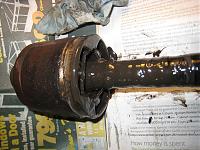
Unfortunately, this NSX lost too much grease from one of the joint. The grease got broken down and changed its characteristic. When I opened the boot, it was like a melted coffee ice cream.
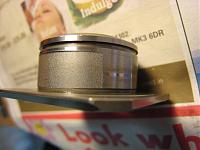
After disassembling all of the rollers, as expected, the internal grease was also black. Due to the broken down grease, there was a scorching mark on the internal wall of one of the roller. It was not too deep so managed to smooth it out but time consuming and delicate process.
2. Eng Oil, filter and Air cleaner element
The owner brought the new air cleaner element with him but on inspection, the existing one was still clean so just took the photo and told him that it would be fine for quite a while.
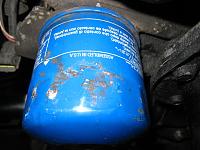
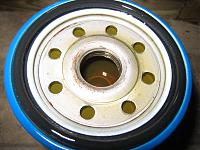
Time to replace the engine oil and oil filter.
However, there were several markings on the old oil filter and when I tried to remove it, I found the reason.
It was so tight that it didnít move at all using my standard oil filter wrench. It actually deformed my filter wrench....
For the first time on NSX, I had to use my rubber strap wrench to loosen the filter. (In fact, just this week, I had to use it again on another NSX.) I think lots of markings were done when someone tried to remove it and just gave up in the past.
New filter with Mobil-1 topped up before fitting it to the oil cooler base.
After draining as much oil as possible from the oil pan, I normally use suction pump to take out around further 500cc from the top.
3. Brake
In Japan, MOT will cost more than GBP1,000 Ė 1,500 every two years because it is so strict that we were kind of forced to replace the parts by the law. This Type-R was well serviced while in Japan as the owner showed me the service history in Japanese. So many parts were replaced but most of them were done under warrantyÖ. Very lucky considering the price of the parts for Type-R.
Unfortunately, in UK, brake is not serviced well for most of the cars on the road.
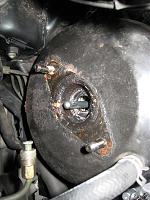
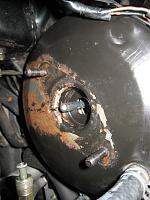
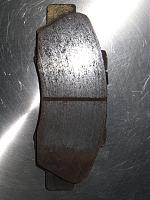
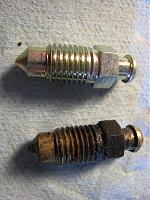
There were trace of leakage at the base of master cyl, un-even wear on one of the pads, rust got inside of the bleeder hole and piston wall, etc so itís time to go through the overhaul process.

Kaz, thanks for the explanation on the gearbox oil. I've read somewhere that MTF II is semi-, MTF III is fully synthetic but not an earthshaking difference. The later one solved a problem with foaming at higher speeds.
Do you have more infos on the MOT in Japan? How strict are they? Replacing parts by the law? Wow!